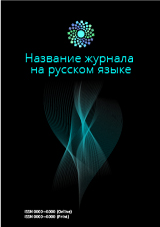
The Kazan Economic Vestnik is the official publication of the Kazan (Volga Region) Federal University.
It is registered with the Federal Service for Supervision of Communications, Information Technology, and Mass Media. Registration Certificate PI No. FS77-48457, dated January 31, 2012, and is the successor to the Bulletin of the Kazan State Institute of Finance and Economics (from 2005 to 2011).
It is published in print form, six issues per year. ISSN for the print version: 2305-4212.
The main goal of the publication is to provide an opportunity for the scientific community and practicing professionals to publish their research results, draw attention to promising and relevant areas of economic science, and enhance the exchange of opinions between the scientific community in Russia, the Republic of Tatarstan, and other countries.
The journal's sections focus on informational, scientific, and educational topics in the fields of economics, finance, and management.
Publications in the Kazan Economic Vestnik journal are included in the Russian Science Citation Index (elibrary.ru).










